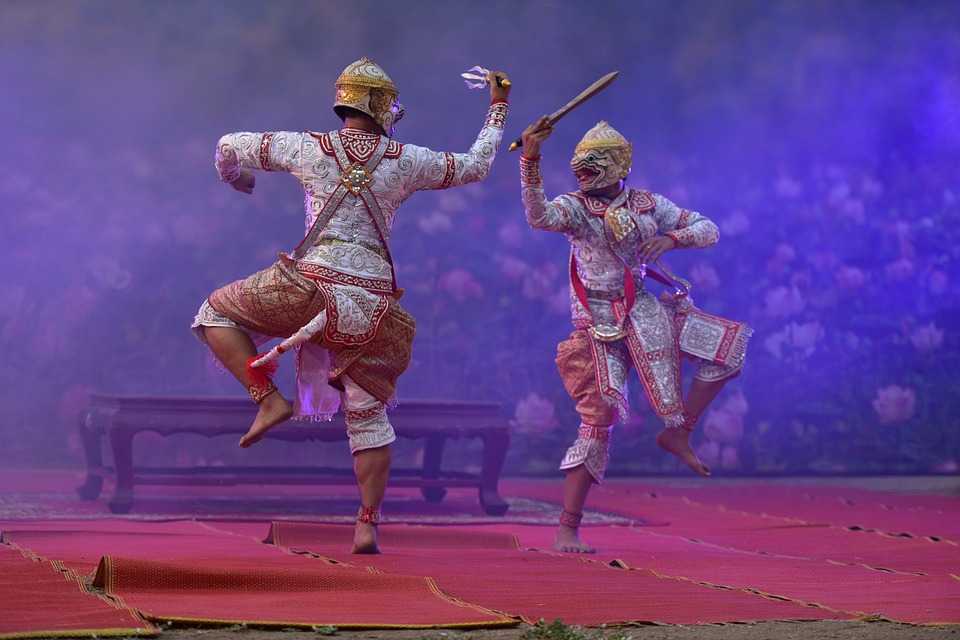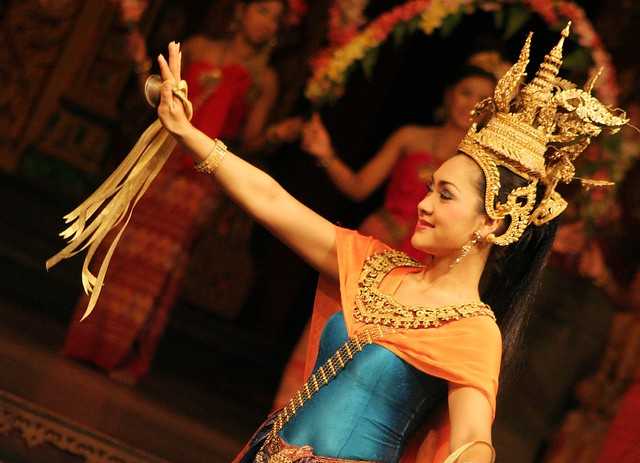Dance is more than just body movements; it is an art, an emotion, expression or representation of a place. Flowing through the rhythmic beats of the music to perform an art or convey a message is mainly the idea behind dancing. A dance type can also be religious where a strong act is performed to attain powers from the Almighty as a part of a ritual. Another form of dance is the ones which contribute to the culture of a place or a community and mainly for recreational purpose is the folk dance. While some cultural dances are intense and powerful, others are graceful and calm to the viewers.
The traditional folk dance of Thailand is elegant and the dancers don intricate costumes. Thai dancing is performed at cultural events, festivals, theatre or even at Thailand hotels, doesn’t that sound intriguing enough? The classical Thai dance focuses on detailed costumes (in gold colour) along with choreography, while the folk dance is inclined towards performance. Let’s take a look at each of them in an elaborate manner to understand Thai culture.
Classical & Folk Dances in Thailand
This is one the most common forms of dance in Thailand and if you haven’t witnessed it then probably your Thailand trip is incomplete. Natasin, the oldest classical dance in this country was developed in the Ayutthaya Period (the 1350’s) is believed to be rooted from the archaeological source. In earlier times dance was performed in the Royal Court by young girls, only accessible to a certain number of audience. Still performed today after years of influence from different cultures mainly Indian, the dance depicts Thai version of Ramayana. Few of them are Khon, Lakhon and Fawn out of the many dance forms rooted in the past and are still performed widely all over the country. Gold costumes, hairstyles decked with flowers, embellished headgears, all of them add impressive appeal to the whole performance.
1. Khon

Widely performed all over Thailand, the Khon form of dance in Thailand is easily recognized even by tourists for the many numbers of people involved in this act. Brightly coloured and elaborate Khon mask is worn by the dancers signifying the legacy that existed long back in this country. A whole bunch of members including monkeys, narrators, demons, singers, artists, chorus bring together a lively atmosphere on the stage. Enacting Ramayana with expressions, gestures and not speaking a single line, the show is executed with classical dance.
The battle scene of this show is considered worth watching as it involves a great amount of interactive and expressive banter.
2. Lakhon

Here it’s the opposite i.e. no masks and sans a drama scene, unlike the Khon dance. With only female dancers enacting together the dance describes the audience a story from the Ramakhien(Thai Ramayana). There are different types of Lakhon like Lakhon Nok, Lakhon Nai, Lakhon Phatang, each having a unique version of themselves. Just like other Thai dance, each of the variations went through changes as per the era they belong to. The latest one in Lakhon Phatang, which involves integrating Chinese martial arts and traditional costumes, depicting the arguments between Chinese and Burmese occurred in the 15th Century.
Saming Phra Ram Asa is a renowned Lakhon Phatang, opera-style event that you can go to visit with your friends or family on your next Thailand trip and indulge in the rich heritage of dances in Thailand.
3. Lakhon Lek
Instead of humans performing, puppets are used to sing and dance here. Though this form of dance is a rarity, it was once upon a time quite famous one. Usually, two feet tall puppets are accompanied by humans to perform on stage, creating a stage show of puppets.4. Fawn Thai Dance
_20190517171745.jpg)
Another type of folk dance in Thailand performed during festivals is the Fawn Dance. Easily choreographed and also known as ‘Fawn Leb’, for its fingernail pattern dance, is known by many tourists due to its frequency. Further divided into five types, here the dancers wear elaborate clothing, following the legacy of royal courts of Siam. Leb, Tian, Marn Gumm Ber, Marn Mong Kol, and Ngiew are the five variations, with no story behind any of the dance acts.
Candle Dance or Fawn Tian is a dance from the Thai kheun tribe where eight dancers present the act by carrying candles in their hands. Often held at night and one of the admired from Fawn category, the dance is performed with couples wearing sarongs and jackets. Here the female dancer worships Buddha, praying to protect the Earth in every way.
Fingernail or Leb is the form belonging to northern Thailand and has its origin from the Chiang Mai region. The speciality of the dancers here is wearing long brass fingernails of around 6 inch and then dancing to the rhythm of the music. The hairstyle of the female dancers are highlighted with a jasmine or orchid flower on an elegant hair bun.Fawn Marn Gumm Ber is called as Butterfly dance and Fawn Mong Kol as Happy Dance are both performed on traditional Thai instruments. The dancers are praised for their artistic or appealing quality as they dance in supreme uniformity, making it look surprising.
The last one, Fawn Ngiew is the Scarf dance and just like the name suggest a scarf is used as a prop in the dance. Specially made for happy events, it has slightly faster steps, but is identical to Fawn Leb. The colourful costumes, Sabai and flower make for a beautiful dance outfit altogether. Most classical forms of dances in Thailand can be witnessed at social events and most importantly on festivals. Thailand known as The Land of Smiles is a welcoming and one of the most visit countries in Asia. It’s the traditional culture, cuisine and tropical climate that make the country inviting to the tourists.
